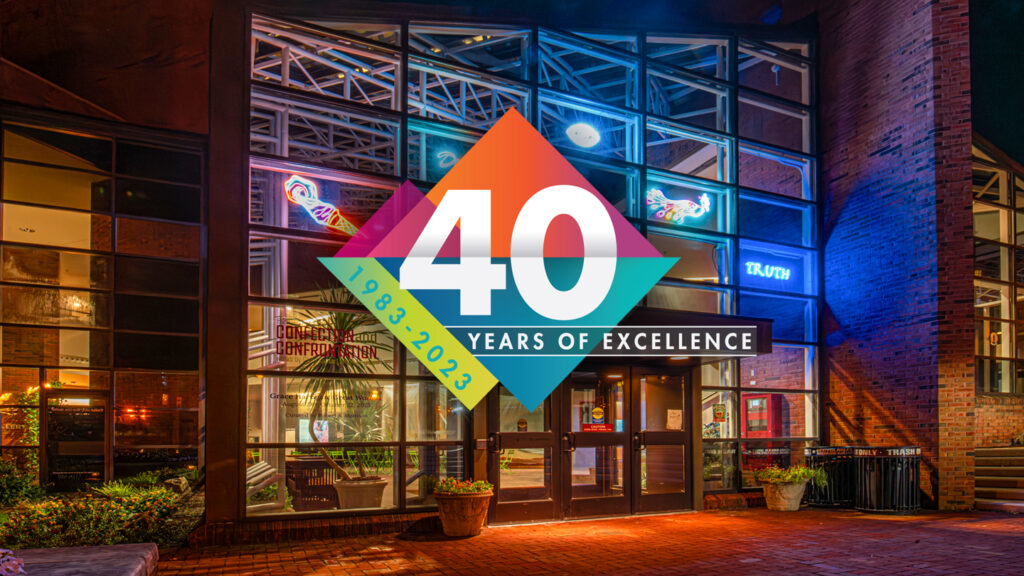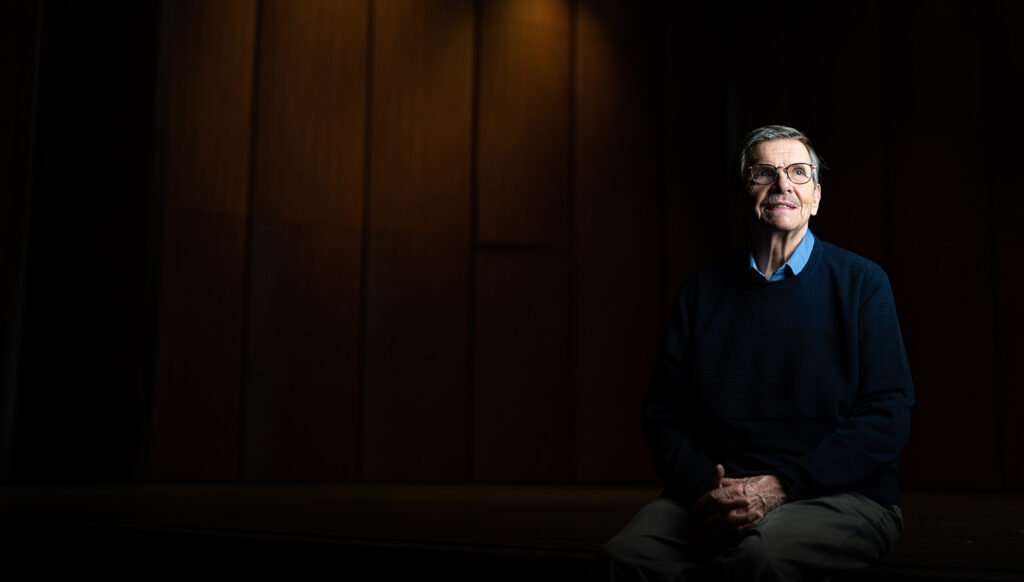Coming Soon
- Next up for this yearlong series of articles celebrating Williams Center’s 40th anniversary: Gina Cuffari, one of the artistic directors and co-principal bassoonist of the Orpheus Chamber Orchestra.
“Intimacy of the space is perhaps the biggest plus of the whole building,” he says

Williams Center for the Arts
By Bryan Hay
The marching band rehearsed in Alumni Gym, the jazz band in Colton Chapel, and other instrumental ensembles set up to practice wherever space allowed.
Life for students and faculty involved in Lafayette’s instrumental music program was rather nomadic before Williams Center for the Arts opened in 1983, says Larry Stockton, professor emeritus of music and former head of the department, who came to Lafayette in 1977.
“We were scattered all over the place. The answer in the early days always seemed to be let’s see if we can move you somewhere else,” he recalls. “Obviously, the facilities were not good. When we heard that this new center was being planned, we were all very surprised and pleased.”

Larry Stockton, professor emeritus of music and former head of the department
As part of the planning for the new Williams Center, Stockton’s job was to work on specifications for the big rehearsal rooms for concert band, orchestra, and choir and other facilities.
“We had to negotiate, of course, a number of individual practice rooms, offices, and things of that nature. But we were given some input, and the Williams Center has served us well over the past 40 years,” he says.
Stockton still senses the excitement and reaction when students and faculty had entered Williams Center for the first time, even before its official opening.
“In the fall of 1983, we were waiting for the opening. In those days, I was doing marching band, and we always had a band camp, which was held five days before classes started,” he says. “I kept telling the kids, sort of as an enticement, that we may get in this building before band camp is over. I thought it would be such a great surprise to the kids to be able to go into the building and say ‘look what’s happening next.’”
Equipment had been readied for the move into the new space, expectations were surging, and then came the disappointing word that the city hadn’t finished its final inspections. With so much built-up anticipation, Stockton acted on impulse.
“Being a young, carefree professor at the time, I said they will never catch us,” he laughs. “So, we found the door open, and I was able to take the kids in to actually look at it. Everything was functioning in terms of electricity and things like that. So, it was quite a nice surprise to everybody.”
In addition to Williams’ educational facilities, the center has made its mark as a cultural center in the Lehigh Valley and raised Lafayette’s profile as a supporter of the performing arts.
“It really gave us a presence in the arts community in the Lehigh Valley because the Performance Series blossomed almost immediately,” Stockton says. “Before the Williams Center opened, most of the concerts, if not all of them, were in Colton Chapel, which is a large facility but with terrible acoustics and not really designed for musical performances. The fact that we were able to establish such a magnificent Performance Series is still something that’s really special.”
Intimate concert experiences
Stockton remembers questioning whether a 400-seat auditorium would be large enough to accommodate the world-class performances that had been envisioned at the Williams Center, but the intimacy and acoustical properties of the space ultimately made concert experiences unique and memorable.
“A larger space would have gone against this intimacy that’s achieved in that hall,” he says. “It’s such an acoustically sound facility. Almost every group that I had contact with that performed there commented on how they loved the intimacy. It’s not usual for a group like the Orpheus Chamber Orchestra, which typically plays at Carnegie Hall, to look out into the audience and connect with audience members and vice versa. It’s a really unique experience for performers and audience goers who come to Lafayette.”
Reminiscing about a Williams Center performance by Kodo drummers, Stockton says the Japanese ensemble set up a vast array of percussion equipment onstage, including a four-ton drum.
“They had to have special accommodations to get it in the center of the stage,” he says. “There’s no curtain. The first thing you focused on was this huge drum, and you’re thinking how in the world is this going to sound in this space? With the first stroke on that drum, I could sense everybody just sort of tensing up. But in the space and with its great acoustics, it was just one of those magical musical moments. We invited pianist Keith Jarrett, who was very interested in seeing this group. He was sitting just a few rows from me. I’ll never forget him swaying back and forth and trying to recapture these rhythms himself. The intimacy of the space is perhaps the biggest plus of the whole building.”
A percussionist by training and a specialist in traditional Japanese music, specifically music of the Kabuki theater, Stockton, who retired in 2021 after his 45 years of service to the College, says there’s still some fine-tuning needed at Williams Center.
“We really have always needed better acoustics, particularly in the practice rooms,” he says. “When somebody’s practicing, you hear them all over the building. It’s the way it’s designed. We just need more space.”
Educational alignment
Stockton says he always appreciated the collegiality and partnership with Ellis Finger, the first director of Williams Center, and his successor, Hollis Ashby, and how they integrated Williams Center performances with the classroom experience.
“I required students in my world music class to attend a certain number of performances,” he says. “For each one, we would discuss it. The students who came to me were just amazed. We’re talking about students who, in some cases, came from very culturally rich settings but had never really been to certain kinds of concerts. And I’ll never forget students saying, ‘I’d never seen an orchestra live. It was amazing. And we were so close.’ It’s definitely had an impact and will continue to inspire.”